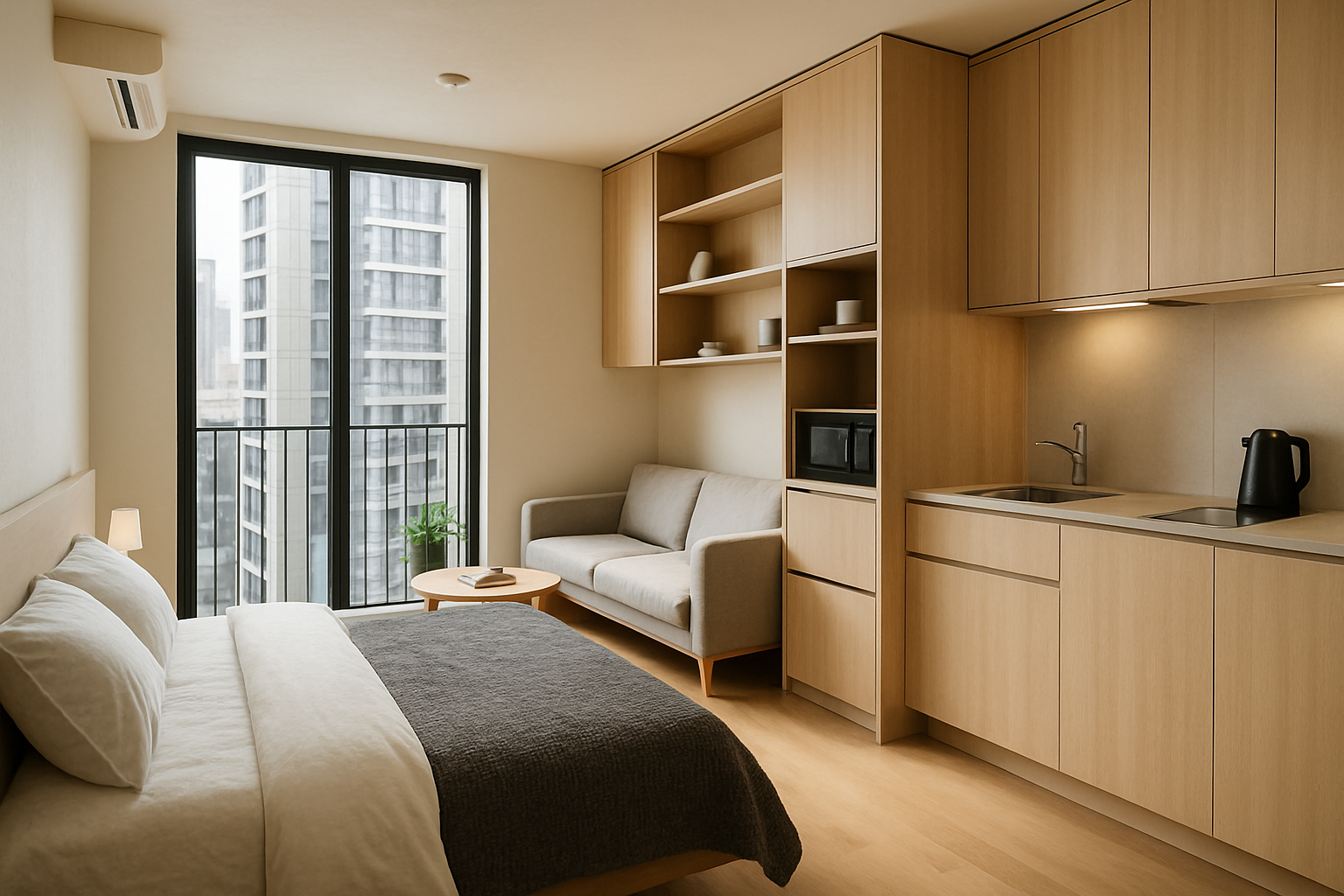Micro-Apartments: Maximizing Urban Living in Minimal Space
The real estate landscape is witnessing a transformative trend as micro-apartments gain traction in major cities worldwide. These compact living spaces, typically ranging from 200 to 400 square feet, are reshaping urban housing markets and challenging traditional notions of home size. As population density increases and housing affordability becomes a pressing concern, micro-apartments offer a innovative solution that balances efficiency, sustainability, and urban lifestyle demands.

The financial crisis of 2008 acted as a catalyst, prompting developers and city planners to rethink housing solutions. As millennials flocked to cities seeking job opportunities and urban experiences, the demand for affordable, centrally-located housing soared. Micro-apartments emerged as a viable answer, offering an entry point into desirable neighborhoods that would otherwise be financially out of reach for many.
Design Innovations in Minimal Spaces
The success of micro-apartments hinges on intelligent design. Architects and interior designers are pushing the boundaries of spatial efficiency, creating living spaces that feel larger than their square footage suggests. Multi-functional furniture, such as beds that transform into desks or dining tables, and built-in storage solutions are staples in these compact homes.
Developers are also incorporating high ceilings and large windows to create an sense of openness. Some micro-apartment buildings feature shared amenities like rooftop gardens, co-working spaces, and communal kitchens, extending the living space beyond the individual unit. These common areas not only provide additional functional space but also foster a sense of community among residents.
Financial Implications for Investors and Renters
From an investment perspective, micro-apartments present an intriguing opportunity. While the per-unit cost may be lower, the yield per square foot is often higher compared to traditional apartments. This makes them an attractive option for real estate investors looking to maximize returns in high-value urban markets.
For renters, micro-apartments offer a trade-off between space and location. While the living area is compact, these units often come at a lower price point than standard apartments in the same neighborhood. This allows individuals to live in prime urban locations that might otherwise be unaffordable. However, it’s crucial to note that the price per square foot is typically higher for micro-apartments, reflecting the premium placed on location and efficient design.
Regulatory Challenges and Urban Planning
The rise of micro-apartments has not been without challenges. Many cities have had to revisit zoning laws and building codes that were not designed with such small living spaces in mind. Minimum size requirements for residential units have been a particular point of contention, with some cities relaxing these restrictions to accommodate micro-apartment developments.
Urban planners are grappling with the long-term implications of this housing trend. While micro-apartments can increase housing density and potentially alleviate affordability issues, there are concerns about their impact on neighborhood demographics and infrastructure. Some worry that an overabundance of micro-units could lead to transient communities and put strain on local services.
The Future of Urban Housing
As cities continue to grow and evolve, micro-apartments are likely to play an increasingly significant role in urban housing strategies. The COVID-19 pandemic has added a new dimension to this trend, with many questioning the viability of extremely compact living in a world more conscious of personal space and hygiene.
However, proponents argue that micro-apartments are well-positioned to adapt to post-pandemic realities. The emphasis on efficient design and multi-functional spaces aligns well with the needs of remote work. Moreover, as urban dwellers seek to reduce their environmental footprint, the inherent sustainability of micro-living becomes even more appealing.
Looking ahead, we can expect to see further innovations in micro-apartment design and functionality. Smart home technology, modular construction techniques, and advancements in sustainable materials are likely to shape the next generation of these compact urban dwellings. As cities grapple with housing affordability and sustainability, micro-apartments represent a compelling solution that challenges our perceptions of space and redefines urban living for the 21st century.





